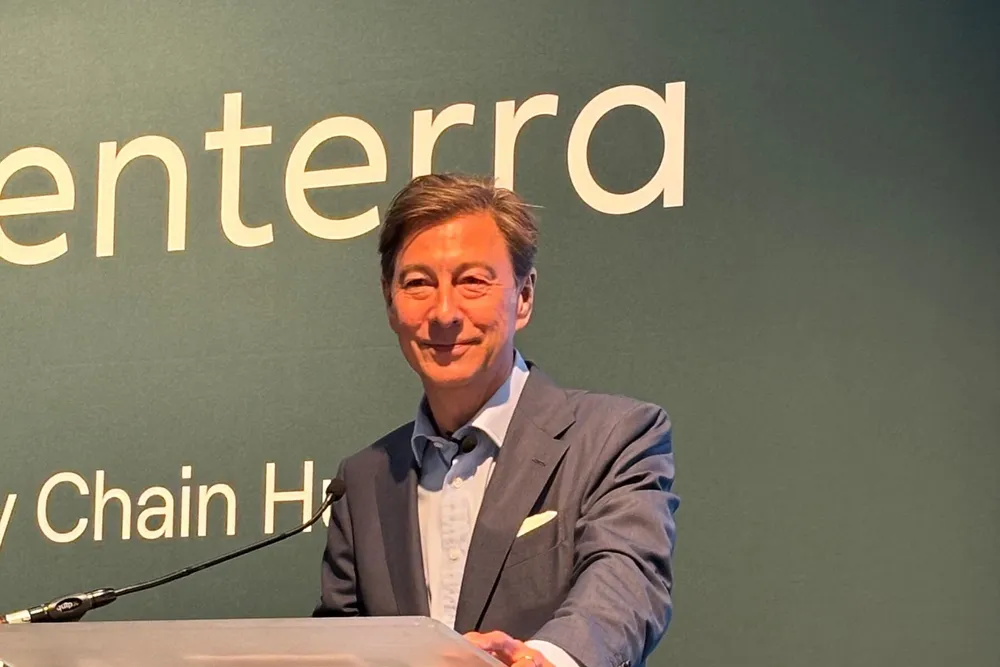Wind CEO: I feared for US business before Empire U-turn
Chief of offshore wind services group says about-turn on Empire Wind suggests 'deals can be done' to keep sector going

The dramatic revival of Empire Wind shows all may not be lost in US offshore wind and that “deals can be done,” said a wind power CEO whose business has a role in the project.
“It would be wrong of me to say we've seen the bottom and it's all trending back up, but it's not quite as bleak as I would have thought a few months ago,” he said during an interview at last week's Global Offshore Wind event in London.
“What I've learned about the US in the last six weeks is it would appear that deals can be done,” Daniels said, noting that the revival of a gas pipeline apparently played a part in the Equinor project's return to construction.
So is it fair to say that US offshore wind is still ticking along in the background?
Yes, not least because considerable amounts of time and money have already been invested.
“I think once you get into it and you're putting bits of steel into the ground, you're going to keep doing surveys. You're going to keep investing, because you can imagine some of these companies are several billion dollars into the hole and they're not going to stop.”
Tale of two industries at front and back end
With Venterra’s involvement in multiple stages of the offshore wind project cycle and a global footprint, the company is well placed to take the temperature of the industry. What’s his top-level view?
“If I look at that globally, it's fair to say that at the construction end and at the equipment end [it’s] sold out, really busy, struggling to recruit enough people, challenges with getting enough of the right ships to position the right equipment in the right places.
“If I look at the front end of the business, in surveying [it’s] much slower. I wouldn't say people are cancelling. I would say people are pausing to reflect and saying, oh, let's just… shift to the right a little bit.
“We'll wait six months or we'll wait three months. And you can see that in the competitive scene,” added Daniels, noting profit warnings and even collapses among some contractors involved in serving the initial phases of projects.
Governments across the world, he believes, are getting better at recognising what does and doesn’t work when trying to stimulate offshore wind.
“I think having one auction that's completely sold out and then the next one that's a complete failure… that sort of seesawing saps investor confidence.”
Daniels added: “The only way we're going to get mass adoption of offshore wind at scale across the world is that it is a profitable venture for investors to put risk capital into and make a buck.
“Governments know that. You and I know that. So governments have got to design the framework, the CfD [contract for difference] is probably my preferred option.
“One that when investors turn up, recognises the cost of money is different than it was a few years ago, recognises the supply chain has got inflationary costs, either because of Covid-type effects, or because the manufacturers of turbines have obviously had their own challenges.
“So this has gone from what has historically been a deflationary environment to an inflation one,” said Daniels.
“We've got to recognise that, but acknowledge that investors can't just soak up all of these different costs in the supply chain. However, there's one caveat to that. I think as a supply chain, we have a duty to examine… where can we help and make savings?”
“Where can we trim 1% here, 2% there? If you could strip 10% off the height of the monopile, it's not going to change the world. But all of these things, when you're putting 100 monopiles in, make a difference.”
Daniels says of the latter “this relatively small company is just outstanding at what it does in terms of the technical design, the software, the control systems”.
(Copyright)